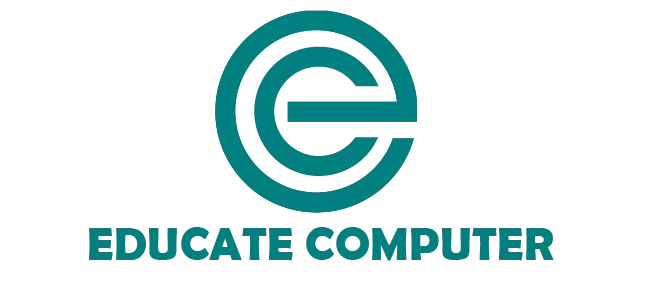In education use of computers improves learning by assisting in teaching, online assignment submission, providing visual representations, learning technical skills, and more.
Uses Of Computers in Education
Here are the uses of computers in education:

1. Assisting in Teaching
Teachers use computers to prepare presentations, documents, tests, etc. Computers help teachers organize lessons and content. Advanced software allows teachers to easily create customized presentations, worksheets, tests, etc. This enhances the visual presentation of material and engagement.
Real-Life Example: A high school math teacher utilizes presentation software daily to provide engaging animated lessons.
2. Providing Visual Representations
Computers and educational technologies allow students to observe detailed visual representations, models, simulations, and animations to gain a deeper understanding of concepts. It engages students and facilitates understanding.
Real-Life Example: Students view an animated video showing cell division processes.
3. Individualizing Instruction
Educational software can teach each student in their way, at their speed. The software gives students lessons and practice matched to what they are ready to learn.
Real-Life Example: A student uses math software that gives them lessons and practice based on their skills.
4. Enhancing Collaboration
Students can work together on group projects and collaborate on assignments through online document editing platforms and video conferencing tools. This facilitates teamwork and the improvement of collaborative skills.
Real-Life Example: Students working on a presentation can simultaneously update slides in real-time using Google Docs without having to be in the same room.
5. Learn Technical Skills
Computers allow students the opportunity to learn important tech skills like typing, creating documents/spreadsheets, and coding. It facilitates academic and professional success. These are taught through software and coding language programs.
Real-Life Example: A coding class teaches JavaScript programming in a computer lab.
6. Facilitates Research
Computers and the internet enable students at all levels to conduct more efficient web-based research for papers, projects, and homework assignments. There is access to up-to-date and extensive information with the ability to filter reputable sources.
Real-Life Example: Students conduct research online for a science project using school databases and educational search engines. They analyze the results and sources for addition in their written paper.
7. Online Tutoring Resources
There are huge computer-based academic tutoring resources available for students online across subjects. It provides instruction from anywhere to support learning and concept mastery.
Real-Life Example: While preparing for SATs, a student uses the online Official SAT Practice app for personalized test prep questions. The full practice tests and feedback are powered by artificial intelligence.
8. Assessment
Teachers develop and administer online tests and assessments using educational platforms to effectively evaluate student progress and comprehension. The results provide insight into strengths and gaps.
Real-Life Example: A 2nd-grade class takes a standards-aligned diagnostic math test online. The teacher receives actionable data reports to guide differentiated instruction.
9. Online Assignment Submission
Students can submit assignments and instructors can grade assignments online through educational platforms like school websites. This facilitates ease of organization, submission, grading, and providing feedback.
Real-Life Example: A student uploads their essay homework to the school’s online learning platform. The teacher can provide digital grading and feedback directly on the student’s document online.
10. Expanding Creativity
Computers offer tools for students to express their creativity in new ways. Drawing apps, video editors, and design software teach artistic technique and composition skills.
Real-Life Example: Photography students use Adobe Lightroom to enhance their photos by adjusting brightness, contrast, and colour balance to create stunning images.
Also Read:
| Uses of Computers in Transportation | Uses of Computers in Finance |
| Uses of Computers in the Agriculture Field |
